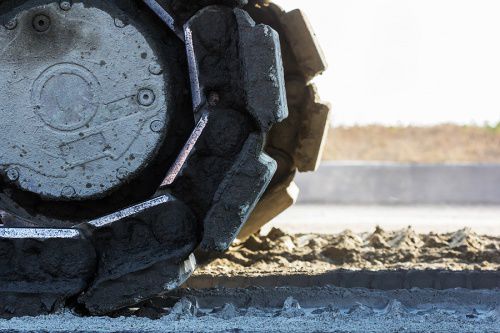Newly uncovered ancient ruins of Byzantine-era church are threatened by the construction of a commercial shopping mall in Gaza, with Palestinian Christians and archaeologists making desperate appeals to save a piece of history.
“It breaks one’s heart to see such destruction of a valuable source of history and one just cannot wipe out thousands-of-years-old history and its significant value,” a young person based in the Holy Land, who wanted to go unnamed, told CNA Apr 11.
“It should not be looked at as a religious issue but a discovery of a treasure, knowledge…But developers see the site as an opportunity. We pray that peace prevails in the region.”
Construction workers were preparing a large area of land for the construction of a new shopping mall. On April 2, they found ancient ruins believed to be from a Byzantine church dating back as early as the fourth or fifth century A.D.
The discovery included several valuable artifacts including a foundation stone nearly three feet long. It had been engraved with a common Greek symbol for Christ. There were also several Corinthian-style marble pillars, one of which is almost 10 feet tall.
Meanwhile, Christians and archaeologists have criticized local authorities for their handling of the discovery. They say the authorities have been silent and have done nothing to protect the historical archaeological area where the construction work has continued.
The Latin Patriarchate of Jerusalem has appealed to the United Nations cultural agency UNESCO and to the local Palestinian Ministry of Tourism and Antiquities.
The local government lacks adequate personnel and funds to preserve the excavations.
Jamal Abu Rida, the general director of the antiquities ministry, said in a statement that the site has historical value.
The site is located near Gaza’s old spice market, the 1,000-year-old Omari Mosque and the fifth century Church of Saint Porphyrius.
Gaza was a prosperous seaport during the time of the Roman Empire. It had a diverse population of Greeks, Romans, Jews, Egyptians and Persians.
The region is birthplace of St. Hilarion, who founded Palestinian monasticism. He built the first monastery in Palestine in 329 A.D. There was widespread church construction in Gaza in the late fourth and early fifth centuries A.D. “During that era, there was a great interest among the Byzantine rulers to build churches in the Gaza Strip,” Abu Rida said, according to Reuters.
This continued until the Muslim general Amr Ibn Al As conquered Gaza in 637 A.D.
Abu Rida said his ministry’s mission is “to preserve our Palestinian history before Islam and after Islam.”
Father Ibrahim Nairouz, a Palestinian clergyman of the Episcopal Diocese of Jerusalem, has objected to the treatment of the ruins. He protested what he said was the insensitive approach of the authorities in handling the issue, the Jerusalem Post reports. He has written to Palestinian Authority Prime Minister Rami Hamdallah and to the Palestinian Minister of Antiquities and Tourism to save the valuable archeological site.
“If they had found the remains of a mosque or a synagogue or any other ancient would they have handled the situation in the same way?” Fr. Nairouz said.
Other action came from Hiam Al-Bitar, Director of Museums and Antiquities at the Ministry of Tourism. She said that it is important to rise above all political differences and continue to communicate.
She said the presentation of shared human history is in the interest of every Palestinian.
Al-Bitar has also appealed to UNESCO to help preserve the archaeological discovery. She wants the French Biblical and Archaeological School of Jerusalem to come to Gaza to study the site.
Photo credit: TUM2282 via www.shutterstock.com.

